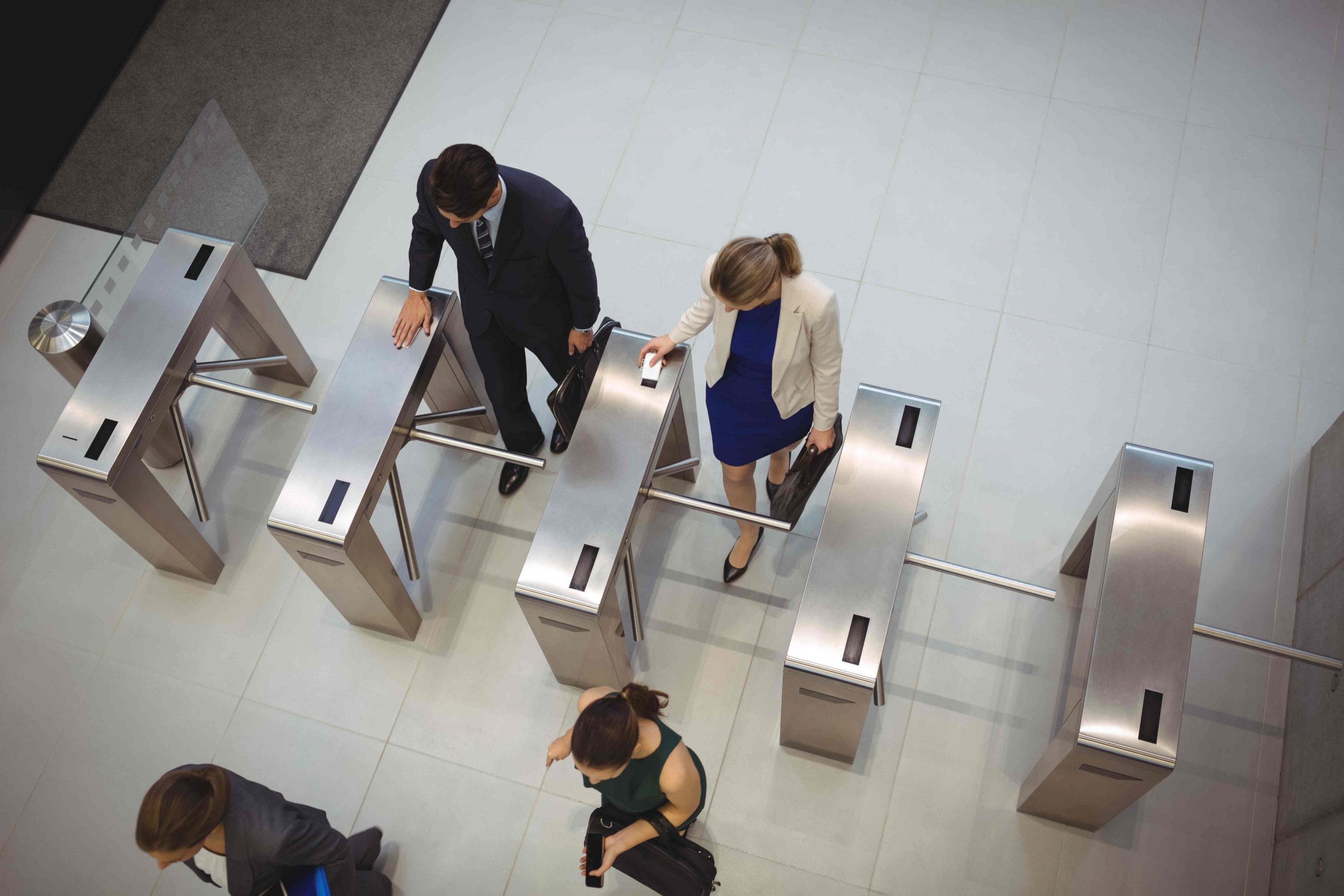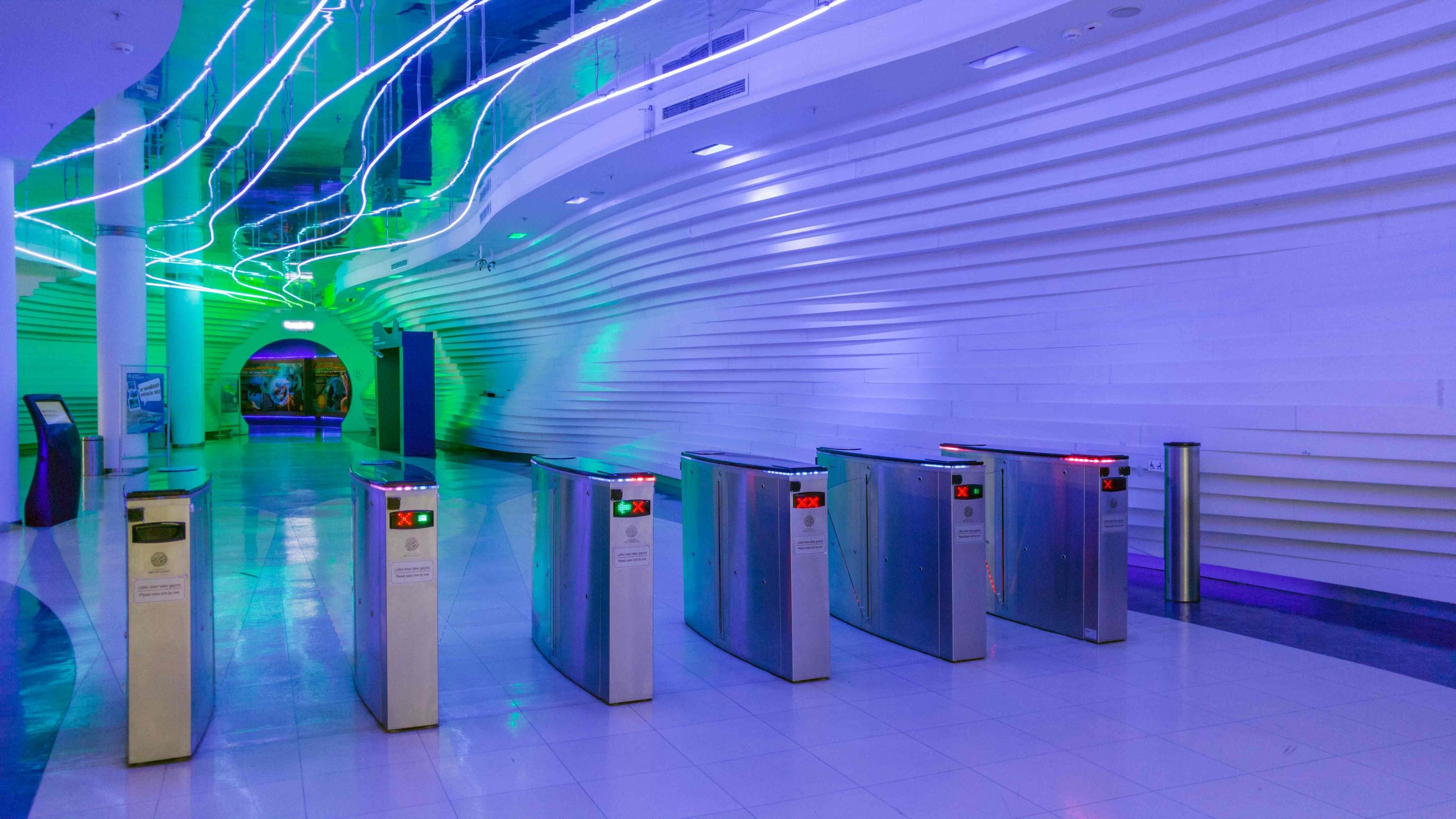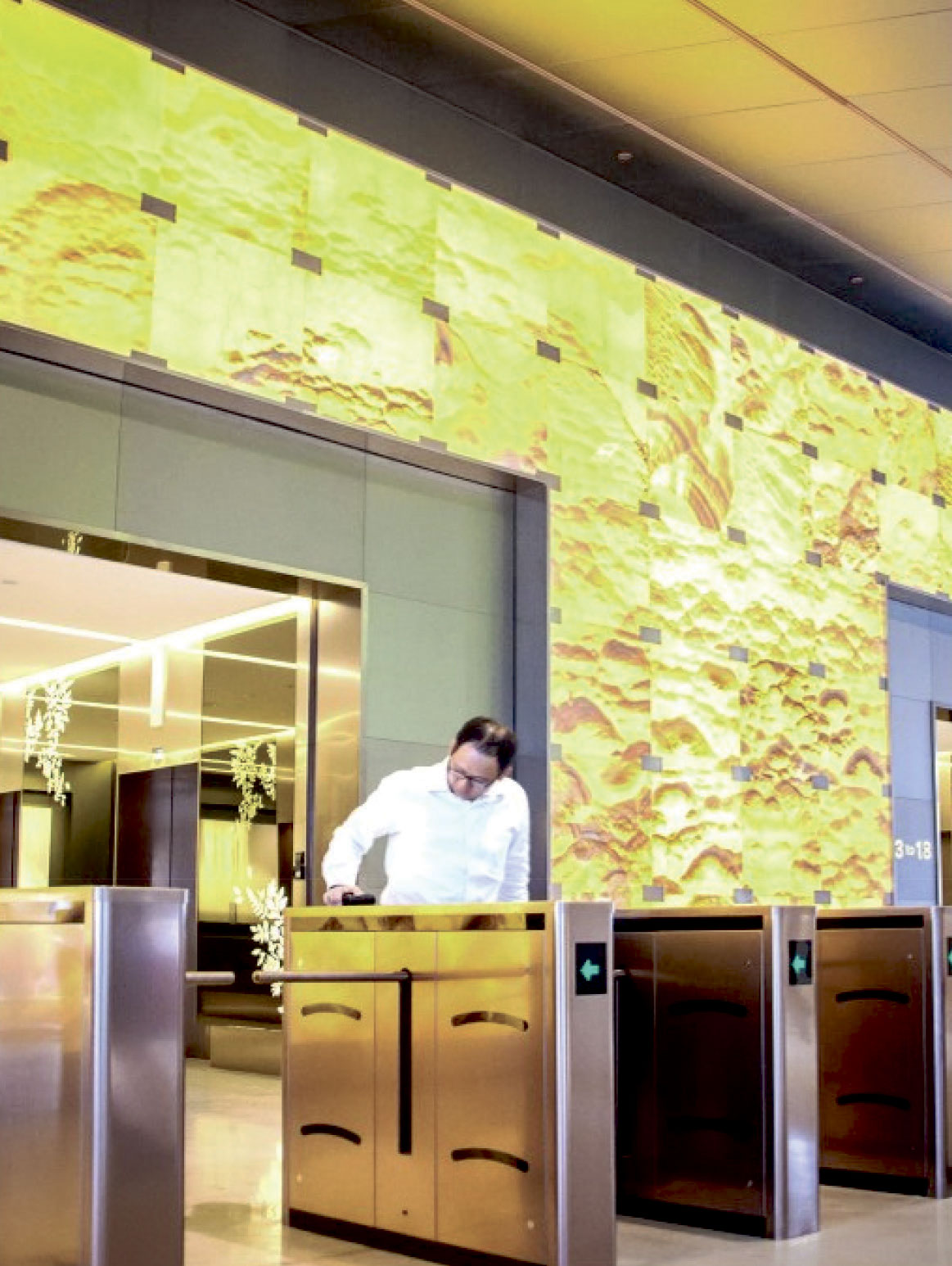Turnstile System
A turnstile is a type of gate that makes it possible to control entry and exit into and out of a specific location.
A traditional turnstile consists of a set of 3 arms that extend horizontally from a post to act as a barrier to entry. These arms rotate to allow entry or lock to restrict access.
A turnstile can provide security, organize crowds, prevent losses from theft, and control access.

Turnstiles have a wide range of applications and are used in a multitude of venues. Places that commonly employ turnstiles include amusement parks, public transit systems, airports, and sporting venues.
Modern turnstiles are mechanical, allowing operators to control how turnstile arms act. A turnstile can be built to spin in one direction, in the opposite direction, or in both, depending on end-user needs.
Most turnstiles are electronically operated – they contain an electronic locking mechanism that can remotely lock or unlock a turnstile.
Many of today’s high technology turnstiles operate with optical sensors that detect when objects pass through their lanes.

Turnstiles come in various sizes and configurations, ranging from waist high to full height.
A traditional three arm (tripod) waist high turnstile is a good choice for tight spaces or when a portable turnstile is needed.
On the other end of the spectrum, a full height turnstile is a great option for high-security applications because it provides floor-to-ceiling protection.

